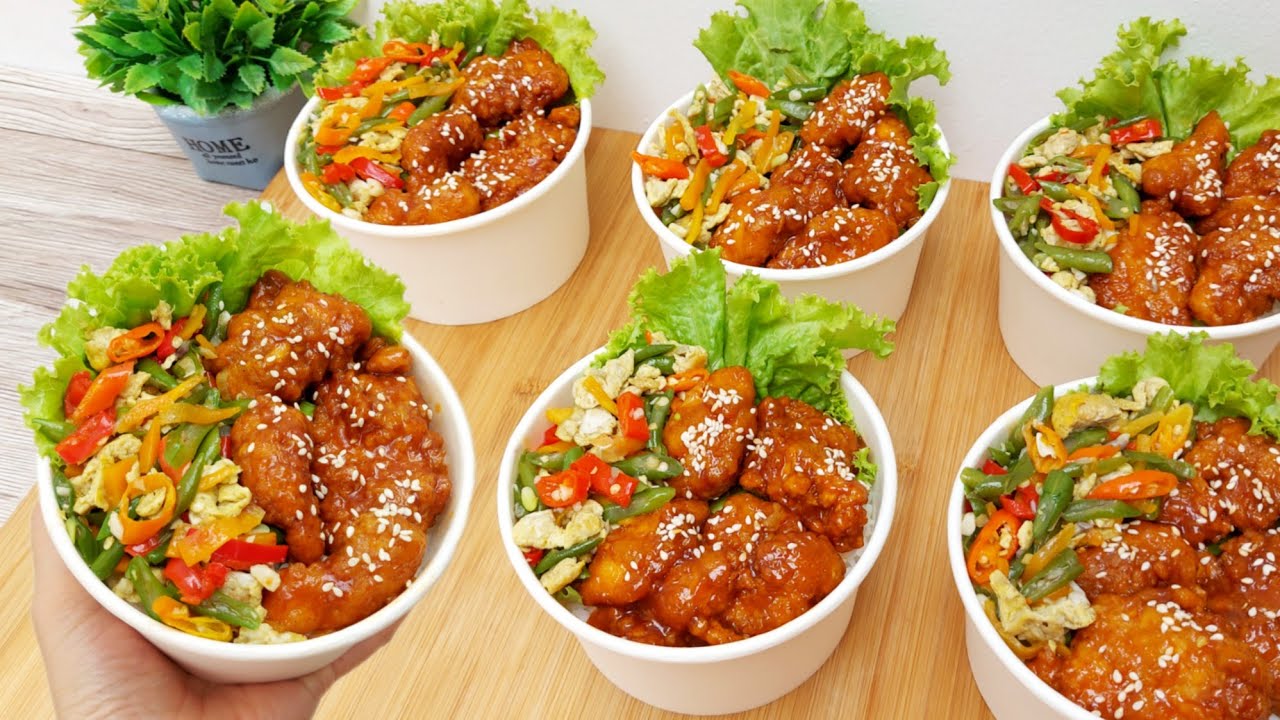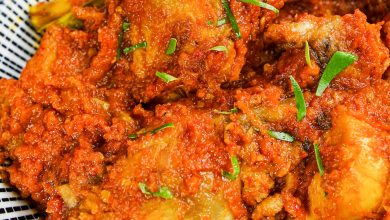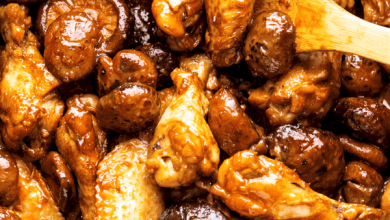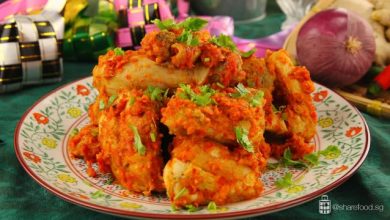Introduction
Ayam Teriyaki ala Hokben is a beloved Indonesian-Japanese fusion dish that captures the essence of savory, sweet, and tangy flavors in every bite. Inspired by the popular Japanese-style chicken glazed with a glossy, flavorful sauce, this rendition brings the authentic taste of Hokben’s renowned chicken right into your home kitchen. Whether you’re a seasoned home cook or a culinary enthusiast eager to recreate restaurant-quality meals, this detailed guide ensures that every step is clear, precise, and packed with expert tips to elevate your cooking experience. At Love With Recipes, we believe that great food begins with understanding the ingredients, mastering techniques, and embracing the joy of cooking. So, gather your ingredients, set aside ample time, and let’s embark on creating a deliciously tender, flavorful Ayam Teriyaki that will impress family and friends alike.
Time
- Preparation Time: 20 minutes
- Marination Time: 25 minutes
- Cooking Time: 15 minutes
- Total Time: Approximately 1 hour
Needed Equipment
- Cutting board
- Sharp chef’s knife
- Measuring spoons and cups
- Mixing bowls
- Whisk
- Skillet or frying pan with lid
- Tongs or spatula
- Fine-mesh strainer or colander
- Grater or zester (for lime)
- Small bowl for marinating
- Cooking brush (optional, for sauce application)
Tags
Japanese cuisine, Indonesian cuisine, Chicken recipes, Easy dinner, Family-friendly, Quick meal, Healthy, Flavorful, Stir-fry
Serving Size
This recipe serves approximately 2-3 people as a main dish, depending on portion sizes. It can be easily doubled or tripled to accommodate larger gatherings or meal prep needs.
Difficulty Level
Intermediate—requires basic knife skills, understanding of marination, and sauce thickening techniques. Suitable for home cooks with some experience but approachable enough for enthusiastic beginners eager to learn.
Allergen Information
| Allergen | Present in this recipe |
|---|---|
| Soy | Yes (Saori Teriyaki sauce) |
| Gluten | Likely (check labels of Teriyaki sauce) |
| Garlic | Yes |
| Chili peppers | Optional, spicy component |
Note: Always verify ingredient labels if cooking for individuals with allergies or gluten sensitivities.
Dietary Preference
- Gluten-Free: Use gluten-free soy sauce and check all packaged ingredients.
- Paleo-Friendly: Omit soy sauce or replace with coconut aminos.
- Keto-Friendly: Use a sugar substitute or omit sugar if desired.
Course
Main Course
Cuisine
Indonesian-Japanese Fusion
Ingredients
In Table Format
| Ingredient | Quantity | Notes |
|---|---|---|
| Chicken breast | 1/2 piece (about 150g) | Skinless, boneless preferred |
| Onion | 1 medium | Sliced into thin strips |
| Garlic | 3 cloves | Minced or finely chopped |
| Red chili peppers | 4 pieces (optional) | Adjust based on spice preference |
| Lime | 1 whole | Juice only |
| Cornstarch | 1 tablespoon | For thickening sauce |
| Saori Teriyaki sauce | 4 tablespoons | Adjust to taste |
| Salt | To taste | Preferably sea salt or kosher salt |
| Black pepper | To taste | Freshly ground recommended |
Instructions
Step 1: Preparing the Chicken
Begin by selecting a fresh, high-quality chicken breast. Rinse the chicken thoroughly under cold running water to remove any residual blood or surface contaminants. Pat the chicken dry using paper towels to facilitate better marinade adherence. Once dried, place the chicken breast in a small mixing bowl or a resealable plastic bag. Squeeze the juice of one lime over the chicken, ensuring even coverage. The acidity of lime juice will tenderize the meat while imparting a subtle citrus flavor that complements the sweet and savory notes of the teriyaki sauce.
Allow the chicken to marinate in the lime juice for approximately 10 minutes. This short marination period is sufficient to tenderize and infuse flavor without beginning the cooking process prematurely. During this time, prepare your other ingredients to maximize efficiency.
After the marination, rinse the chicken breast under cold water to wash off excess lime juice. This step prevents overly acidic flavors and ensures the chicken’s surface is clean before proceeding.
Pat the chicken dry once more with paper towels. Excess moisture can interfere with browning and caramelization during cooking. Achieving a dry surface is essential for a good sear and sauce adherence.
Step 2: Seasoning and Marination
Transfer the dried chicken breast to a clean mixing bowl or plate. Coat the chicken evenly with Saori Teriyaki sauce, ensuring all surfaces are covered. This sauce is the star of the dish, providing the characteristic sweet, salty, and umami-rich flavor profile. Use about 3-4 tablespoons, but feel free to adjust to your taste preferences.
Add a pinch of salt and freshly ground black pepper to enhance the flavor. Remember that the teriyaki sauce already contains salt, so season sparingly at this stage. Mix thoroughly to ensure the marinade penetrates the meat evenly. Cover the bowl with plastic wrap or use a resealable bag, and let the chicken marinate at room temperature for at least 15 minutes. This additional marination time allows the flavors to permeate the meat more deeply, resulting in a more flavorful final dish.
Step 3: Preparing the Vegetables
While the chicken is marinating, prepare the vegetables for stir-frying. Peel and thinly slice the onion into strips, approximately 1/8 inch wide. Finely chop or mince the garlic cloves. If using red chili peppers, slice them into thin rings or strips. Adjust the amount based on your preferred spice level—more peppers for heat, fewer for milder flavor.
Heat a large skillet or frying pan over medium heat. Once hot, add a small amount of cooking oil—vegetable oil, canola oil, or sesame oil for added aroma. Swirl the oil to coat the surface evenly. Add the sliced onions, garlic, and red chili peppers to the pan. Sauté the mixture, stirring frequently, until the onions become translucent and soft, and the garlic releases its fragrant aroma. This process takes about 3-5 minutes and forms the flavorful aromatic base for your dish.
Step 4: Cooking the Chicken
Increase the heat slightly to medium-high. Carefully add the marinated chicken breast to the skillet, placing it in the pan to allow for proper searing. Use tongs or a spatula to lay the chicken flat, ensuring maximum contact with the hot surface. Cook the chicken for about 3-4 minutes on each side, or until a golden-brown crust forms. Proper searing locks in juices and enhances flavor.
Once the chicken is browned on both sides, cut it into bite-sized pieces or strips, depending on your presentation preference. Return the cut pieces to the skillet, along with any residual marinade. Pour in approximately 1/4 cup of water or chicken broth to facilitate the formation of a glossy sauce. This liquid helps prevent sticking and allows the sauce to develop its rich, sticky consistency.
In a small bowl, mix the cornstarch with a tablespoon of water to create a slurry. Slowly add this slurry to the skillet while stirring continuously. This step thickens the sauce, giving it that characteristic shiny, clingy finish typical of Hokben’s Ayam Teriyaki. Continue to simmer for 2-3 minutes until the sauce thickens to your desired consistency.
Ensure the chicken is cooked through—internal temperature should reach 165°F (74°C). Use a meat thermometer if available for precision. The sauce should coat the chicken pieces evenly, creating a luscious glaze that is both flavorful and visually appealing.
Step 5: Final Adjustments and Serving
Taste the sauce and adjust seasonings accordingly. If it’s too thick, add a splash more water or broth to loosen it slightly. If it needs more sweetness or saltiness, add a small splash of soy sauce or a pinch of sugar, but do so gradually to avoid overpowering the balance of flavors.
Once satisfied with the flavor and consistency, remove the skillet from heat. Transfer the chicken to a serving dish or plate. Garnish with additional sliced chili peppers or chopped green onions if desired for color and extra flavor. Serve immediately while hot.
Preparation Tips
- Use fresh chicken for the best texture and flavor. If using frozen chicken, thaw completely before marinating.
- To ensure even cooking, cut the chicken into uniform pieces.
- If you prefer a sweeter sauce, add a teaspoon of honey or brown sugar during the simmering stage.
- For a more pronounced garlic flavor, add extra minced garlic during the sautéing process.
- To avoid burning the garlic and chili, keep the heat at medium or slightly below during sautéing.
Nutritional Information
| Nutrient | Per Serving (Approximate) |
|---|---|
| Calories | 320 kcal |
| Protein | 25 g |
| Fat | 10 g |
| Carbohydrates | 30 g |
| Sugar | 8 g |
| Sodium | 650 mg |
Tips and Tricks
- Marination Time: Longer marination (up to 30 minutes) enhances flavor penetration but is not necessary for tenderness.
- Sauce Consistency: Adjust cornstarch slurry gradually; over-thickening can make the sauce gloopy.
- Flavor Balance: Taste before serving and adjust sweetness or saltiness to suit preferences.
- Presentation: Slice the chicken against the grain for tenderness and arrange neatly for an appealing presentation.
Add-ons
- Sesame seeds sprinkled on top for added texture and flavor.
- Chopped green onions for freshness and color.
- Steamed rice or noodles to complete the meal.
- Additional vegetables such as broccoli, bell peppers, or snap peas stir-fried with the dish.
Side Dishes
- Steamed jasmine or basmati rice
- Japanese-style pickles (tsukemono)
- Simple miso soup
- Mixed vegetable stir-fry
- Seaweed salad
Improvements
- Use homemade teriyaki sauce for a more natural flavor—combine soy sauce, mirin, sake, sugar, and ginger.
- Add a splash of sake or rice wine for depth.
- Try different proteins like chicken thighs or pork for variation.
- Incorporate fresh herbs such as cilantro or basil for a unique twist.
Save and Store
Leftover Ayam Teriyaki can be stored in an airtight container in the refrigerator for up to 3 days. Reheat gently in a skillet over low heat or in the microwave, adding a splash of water or broth to revive the sauce’s moisture. For longer storage, freeze in a sealed container for up to 2 months. To prevent the chicken from drying out upon reheating, cover with a damp paper towel or lid.
FAQ
Can I use chicken thighs instead of chicken breast?
Yes, chicken thighs are juicier and more forgiving during cooking. Adjust cooking times accordingly, ensuring they reach an internal temperature of 165°F (74°C).
Can I make this recipe gluten-free?
Absolutely. Substitute regular soy sauce with tamari or gluten-free soy sauce. Ensure that all ingredients, including the teriyaki sauce, are labeled gluten-free.
How do I make the sauce thicker?
Use more cornstarch slurry, but add gradually and stir continuously to avoid clumping. Simmer until the sauce reaches your preferred thickness.
Is this dish spicy?
Spice level depends on the red chili peppers. Adjust the quantity or omit entirely if you prefer mild flavor.
Conclusion
Mastering Ayam Teriyaki ala Hokben at home is a rewarding culinary experience that combines technique, flavor balancing, and presentation skills. With attention to detail and careful execution, you can enjoy a restaurant-quality dish that rivals the flavors of your favorite Japanese eateries. Remember, the secret lies in the marinade, the searing process, and the perfect thickening of the sauce. As you gain confidence, feel free to experiment with variations—adding different vegetables, spices, or proteins—to make this dish uniquely yours. Love With Recipes is dedicated to guiding you through these culinary adventures, ensuring that every meal you prepare is delicious, nutritious, and full of love.
References
- Japanese Cooking: A Simple Art by Shizuo Tsuji
- Authentic Japanese Cooking by Elizabeth Andoh





